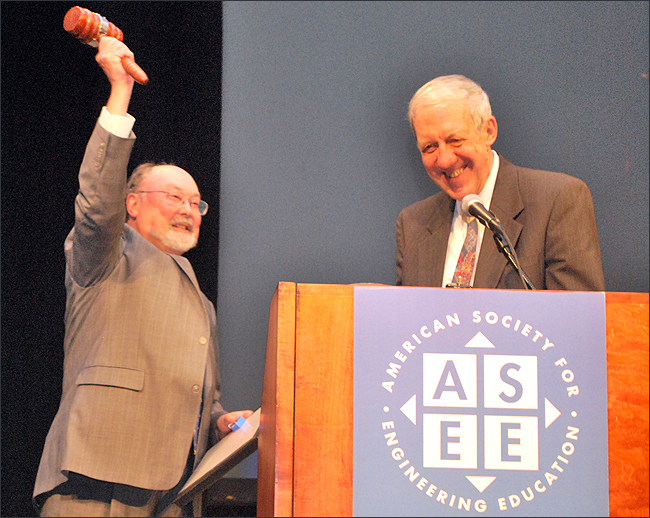
Kenneth F. Galloway assumed the presidency of the American Society for Engineering Education at a gala event June 26 at the conclusion of the ASEE’s 2013 annual conference.
“The work of the ASEE is vital to advocate for our students and for engineering and engineering technology education with decision makers in academia, industry and government,” said Galloway, who also will focus on membership service.
Galloway said the ASEE must continue its efforts in K-12, in communicating the excitement of engineering to potential students, in promoting diversity in the engineering workforce, in linking effective teaching and student learning, in preparing engineering students for a globalized economy, and in encouraging collaboration between academia and industry.

Galloway follows Walter Buchanan, J.R. Thompson Professor and head of the department of engineering technology and industrial distribution at Texas A&M University, as president. Galloway will serve one year as president and then become immediate past president for one year.
Galloway is a Distinguished Professor of Engineering, professor of electrical engineering and computer science and former dean of the School of Engineering. His past service to the ASEE includes chair of the Engineering Deans Council Public Policy Committee, and as a member of the Engineering Deans Council Executive Board. He recently joined the Journal of Engineering Education Advisory Board. Galloway is an ASEE Fellow, a Fellow of the Institute of Electrical and Electronics Engineers, the American Association for the Advancement of Science, and the American Physical Society.
Galloway’s personal research and teaching activities are in solid-state devices, semiconductor technology, and radiation effects in electronics. He has published numerous journal and conference papers in these areas, and his research has received sustained support from several U.S. Department of Defense organizations.